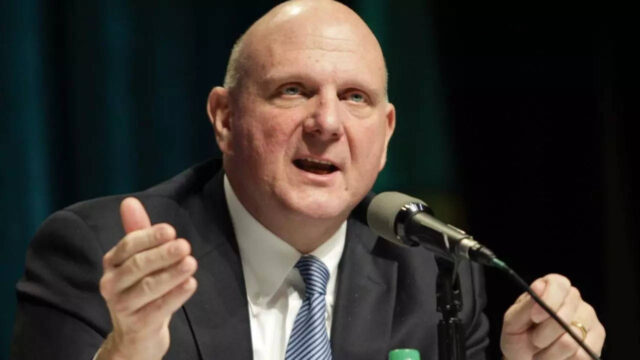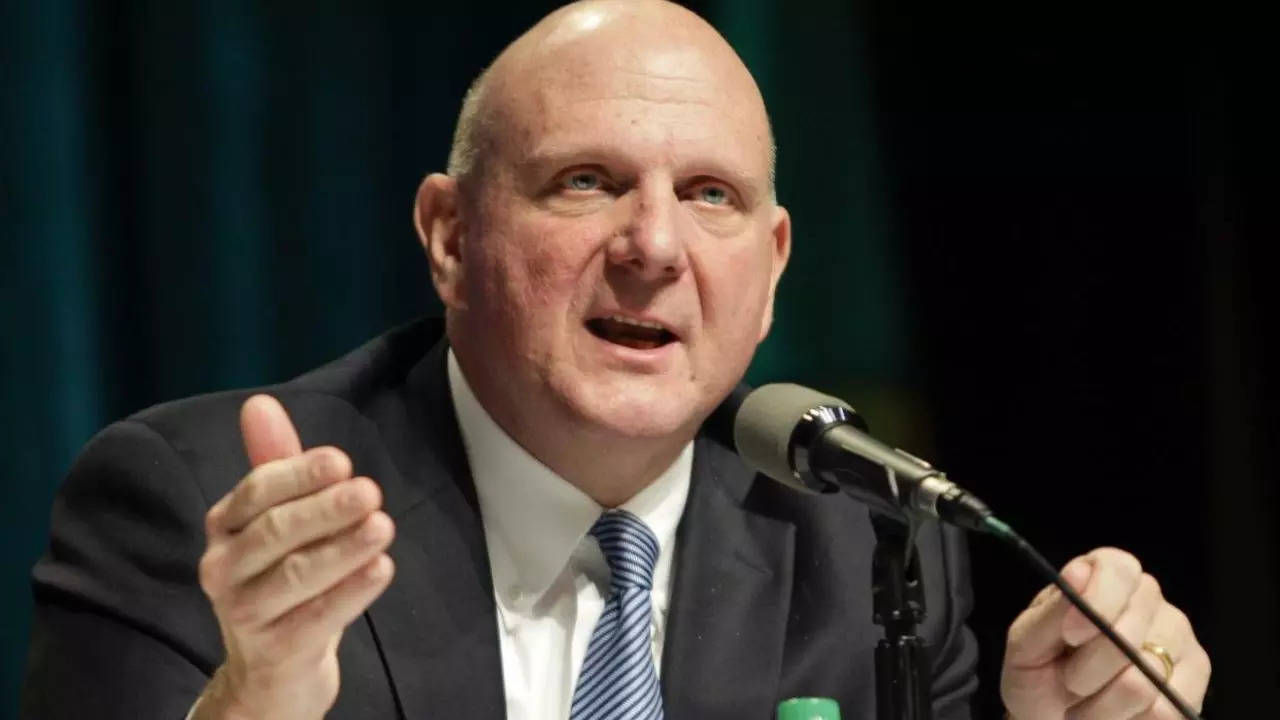
Steve Ballmer passed Bill Gates on Monday to become the sixth-richest person in the world, the first time the former chief executive officer of Microsoft Corp. has been wealthier than the company’s co-founder.
The move came as Microsoft shares rose to a fresh record, bringing their total gain this year to 21%. The company, through its partnership with OpenAI, has been one of the biggest beneficiaries of the artificial intelligence rally that has powered the US stock market higher.
More than 90% of Ballmer’s $157.2 billion net worth is in Microsoft shares, according to the Bloomberg Billionaires Index.Gates, meanwhile, has diversified his $156.7 billion fortune: About half his wealth is held through Cascade Investment, which was created with the proceeds of Microsoft stock sales and dividends. He also owns a $21 billion stake in waste-management company Republic Services Inc. through Cascade.
Gates, 68, has been slowly reducing his fortune through philanthropy. Along with his ex-wife Melinda French Gates and his friend Warren Buffett, Gates has funneled billions of dollars of his personal money to build up the $75 billion Gates Foundation, one of the biggest charitable organizations in the world.
Since they started the foundation more than two decades ago, Gates and his former wife have given almost $60 billion from their personal fortunes. French Gates recently stepped down as co-chair of the foundation and received $12.5 billion to use for her own charitable purposes.
In 2010, Gates, French Gates and Buffett also founded the Giving Pledge, an organization that encourages the world’s richest people to give away the majority of their fortunes in their lifetimes or their wills. Ballmer, 68, who has not signed the Giving Pledge, has his own philanthropic work but nowhere on the scale of Gates.
Gates founded Microsoft with his friend Paul Allen in 1975 and led it until 2000, when Ballmer — one of the company’s earliest employees — replaced him as CEO. Ballmer retired in 2014 and became Microsoft’s largest shareholder that same year. He bought the NBA’s Los Angeles Clippers for $2 billion in 2014, an investment that is estimated to be worth $4.6 billion today.
The move came as Microsoft shares rose to a fresh record, bringing their total gain this year to 21%. The company, through its partnership with OpenAI, has been one of the biggest beneficiaries of the artificial intelligence rally that has powered the US stock market higher.
More than 90% of Ballmer’s $157.2 billion net worth is in Microsoft shares, according to the Bloomberg Billionaires Index.Gates, meanwhile, has diversified his $156.7 billion fortune: About half his wealth is held through Cascade Investment, which was created with the proceeds of Microsoft stock sales and dividends. He also owns a $21 billion stake in waste-management company Republic Services Inc. through Cascade.
Gates, 68, has been slowly reducing his fortune through philanthropy. Along with his ex-wife Melinda French Gates and his friend Warren Buffett, Gates has funneled billions of dollars of his personal money to build up the $75 billion Gates Foundation, one of the biggest charitable organizations in the world.
Since they started the foundation more than two decades ago, Gates and his former wife have given almost $60 billion from their personal fortunes. French Gates recently stepped down as co-chair of the foundation and received $12.5 billion to use for her own charitable purposes.
In 2010, Gates, French Gates and Buffett also founded the Giving Pledge, an organization that encourages the world’s richest people to give away the majority of their fortunes in their lifetimes or their wills. Ballmer, 68, who has not signed the Giving Pledge, has his own philanthropic work but nowhere on the scale of Gates.
Gates founded Microsoft with his friend Paul Allen in 1975 and led it until 2000, when Ballmer — one of the company’s earliest employees — replaced him as CEO. Ballmer retired in 2014 and became Microsoft’s largest shareholder that same year. He bought the NBA’s Los Angeles Clippers for $2 billion in 2014, an investment that is estimated to be worth $4.6 billion today.





































